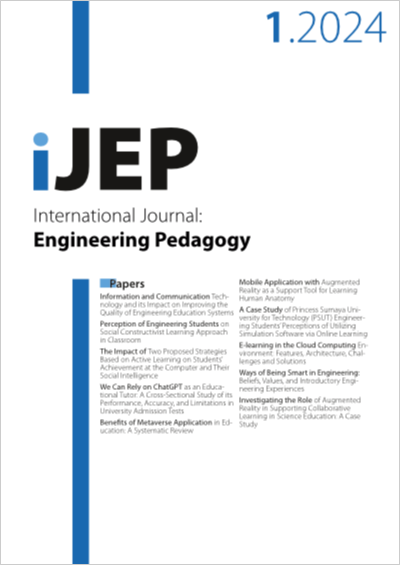Perception of Engineering Students on Social Constructivist Learning Approach in Classroom
DOI:
https://doi.org/10.3991/ijep.v14i1.43101Keywords:
Constructivism, perception, engineering, students, technologyAbstract
The social constructivist approach to teaching and learning has garnered significant interest among educators and researchers. However, further investigation into its implementation and effectiveness in the classroom is still needed. This study aims to investigate engineering students’ perceptions of social constructivist practices in their technology classes, using the constructivist learning environment survey (CLES) as its framework. A mixed-methods approach combining quantitative and qualitative methods was used, which included online surveys and semi-structured interviews. Analysis of data from 300 responses showed that constructivism was partially implemented in the classroom. Specifically, student negotiation emerged as the most frequently perceived dimension, while shared control was perceived as seldom occurring. Most items on the personal relevance scale were frequently perceived, highlighting the importance of integrating technology learning into students’ daily lives. Similarly, the uncertainty of technology was found to be a common experience for students. In contrast, the dimension of critical voice received mixed results, emphasizing the necessity of a learning environment that fosters student expression and meaningful discussions. These findings suggest the necessity for additional investigation and integration of social constructivist practices that emphasize the enhancement of student engagement, promotion of critical thinking, and redistribution of power within the classroom setting.
Downloads
Published
How to Cite
Issue
Section
License
Copyright (c) 2023 Thi Thuy An Ngo

This work is licensed under a Creative Commons Attribution 4.0 International License.



